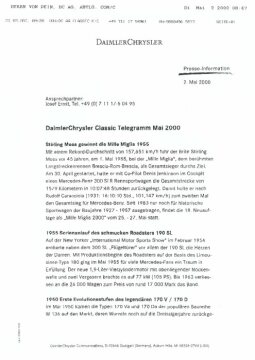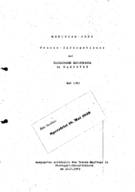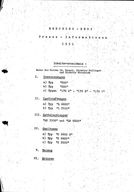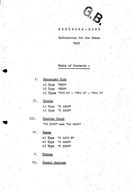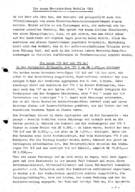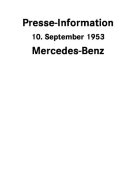Delete
Do you really want to delete the data record?
Download
Please wait a moment ...
Download
Please wait a moment ...
Download
Please wait a moment ...
Crop for shopping cart
Please wait a moment ...
Set as main picture
Do you want to set this media object as main picture?
-
Caption
:
Passive Sicherheit made by Mercedes-Benz: 60 Jahre Entwicklungsarbeit; 40 Jahre Crashtesterfahrung; 30 Jahre systematische Unfallforschung Fotonummer: 89F360, / D47971 Mercedes-Benz SL Roadster, Baureihe 129, Sicherheitsforschung 1989 Fotonummer: VS68409 / 1996M146 / Si68409 1959-1964: Erste Crashtests mit einem Mercedes-Benz 170 S. Dieser Mercedes-Benz 170 S, Baujahr 1951, zeigte beim Frontalaufprall mit 50-km/h gegen die starre Wand gute Qualitäten. Trotz der hohen Karosseriestabilität war die Schutzwirkung für die Passagiere noch relativ gering.
-
Pages
:
4
-
Caption
:
Pressemappe. Technische Exportmesse Hannover; Vortrag Fritz Nallinger u. Wilhelm Haspel (Presse-Empfang in Stuttgart-Untertürkheim am 10. Mai 1949). Personenwagenprogramm 1949: Typ 170 S, Typ 170 D, Typ 170 V; Lastkraftwagen-Programm 1949: Typ L 3250, Typ L 5000; Omnibusse: Typ O 3250, Typ O 5000.
-
Pages
:
98
-
Caption
:
Pressemappe. IAA in Frankfurt 1951: Rede zum Presseempfang Dr. W. Haspel; Vortrag F. Nallinger (Vorstellung "L 6600", "L 5000" und "O 6600 H" ); PKW-Programm: "Typ 220", "Typ 300"; Rede A. Friedrich zum Presseempfang; Neue Mercedes-Benz Personenwagen: "Typ 300" (technische Daten), "Typ 220" (technische Daten), "Typ 170 S", "170 D" und "170 V" (technische Daten); Mercedes-Benz Fahrzeugdieselmotorenbau Schwerlastwagen "L 6600" (technische Daten), "L 3500" und "LA 3500" (technische Daten), Mercedes-Benz Sattelschlepper, Mercedes-Benz Omnibusse: "O 6600 H", "O 6600" und "O 3500" (technische Daten); Unimog - Arbeits-, Schlepp- und Transportgerät für die Landwirtschaft (technische Daten); Mercedes-Benz Dieselmotoren
-
Pages
:
106
-
Caption
:
Press Kit. IAA in Frankfurt: Passenger Cars Type 300, Type 220, Types 170 S, 170 D, 170 V; Trucks Type L 6600, Type L 3500; Trailer Truck LS 3500 and LS 6600; Buses Type O 6600 H, Type O 6600, Type O 3500; Unimog; Diesel Engines Photo number: 51058, 50993, 50989, 50954, 50986, 50896, 50286, 50992, 49448, 51036, 51061, 47929, 51059, 51056, 49050, 49934, 50995, 50994, 50997, 51014, 51053, 51052, 50990, 50996, 51043, 51042, 51037, 51039, 51038,
-
Pages
:
68
-
Caption
:
Pressemappe. Vorschau neue Mercedes-Benz Modelle 1954: 170 S-V, 170 S-D, Typ 180, Typ 220; 300 und 300 S; Mercedes-Benz Nutzfahrzeugprogramm: L 3500, L 4500, L 5500 und L 6600 (technische Daten), Mercedes-Benz Omnibusse: O 6600, O 3500 und O 6600 H; Verwendungsmöglichkeiten für den UNIMOG
-
Pages
:
37
-
Caption
:
Pressemappe. Sternfahrt der neuen Mercedes-Benz Modelle am 10. September 1953; Rede von Dr. Fritz Könecke zum Presse-Empfang am 8. September 1953; Rede von Herrn Dipl.-Ing. Dr. Fritz Nallinger zur Presse-Vorführung der neuen Typen 170 S-V, 170 S-D und 180; Mercedes-Benz 170 S-V, 170 S-D (technische Daten); Mercedes-Benz Typ 180
-
Pages
:
139

Loading









